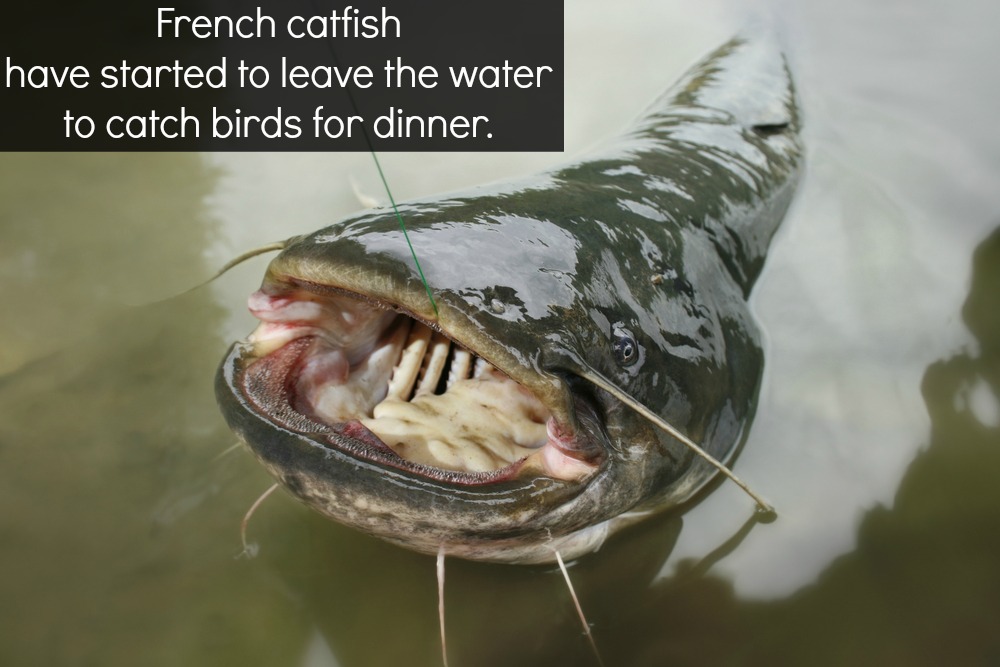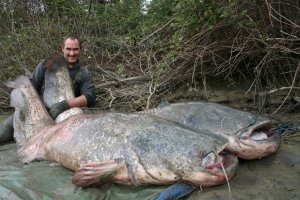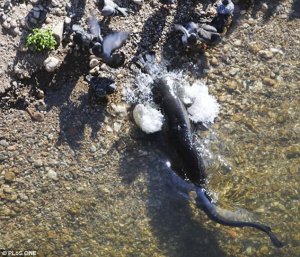

Nature has the unfailing power to surprise us. In fact, as soon as we decide we have a clear picture of something, we are often sent straight back to the drawing board. Here on Earth, many of these events are found in the most unexpected of places. And with the ever increasing number of handheld cameras that can capture rare footage in mere moments, more and more, we are beginning to see that nature is not as predictable as we think.
Speaking of predictable…
Albi is a classic and picturesque town in south-west France most notable for the beautiful river — called ‘River Tarn’ — that cuts through it. But looks can be deceiving, as this has been the site of a series of brutal murders from a previously unknown source of danger — if you are a pigeon. Introduced in the 1980s by fishing enthusiasts looking for something to make their angling trips more interesting, ‘European Wels catfish‘ have spread like wild fire across dry soil throughout southern Europe. But Tarn is the only place “pigeon hunting” has been observed.
Catfish are very primitive marine creatures, but surprisingly, their supreme adaptability puts them at the top of the food chain in many fresh water environments. Traditionally, the predator inhabits the muddy and dark depths of his habitat, where it subsequently feeds on a diet of worms, crustaceans, mussels, and sometimes dead fish. This high protein diet means that catfish are able to grow and mature more rapidly, reaching over a metre in length when all is said and done.
Two unusual features that belong to the catfish include their smooth skin – compared to the scaly skin of most fish — and their long feelers that protrude from their mouth/nose region. These motion detectors enable them to note any vibrations in the water caused by predators lurking nearby, giving them an advantage when it comes to hunting in muddy water. But they are also very opportunistic fish. Even though their vision isn’t great, having eyes situated on top of their heads certainly makes it simpler to survey their surroundings.

This means that it isn’t uncommon for young water birds or other reasonably small species to disappear in a splash into the depths. They rely on stealth to creep up close enough to their prey. They subsequently open their huge mouths close to, or beneath, their victim. This sucks water in, therefore the target is helpless to avoid getting dragged in alive and swallowed whole — not a nice way to go. But of course, this hunting tactic doesn’t work on land, so how on Earth are they catching pigeons? and why? Scientists who have been studying these fish described their hunting strategy as such: They slowly creep up towards the beach where the bright Mediterranean sun on the surface of the river hides their dark bodies from the pigeons, and they point their feelers ahead of them to feel for the pigeons who decided to take an innocent paddle in the warm waters. They then lunge up to half of the length of their bodies onto land to make an attempt to grab one of the birds.
Watch this video to see them in action: http://www.youtube.com/watch?v=xLT7U3VSCKQ
The only other marine animal seen to show similar behaviour are some pods of killer whales, which also take the risk of beaching themselves in order to try and catch young seals. So why would these two choose to risk their lives while they are perfectly capable of hunting what they are “supposed” to prey on? Well, for catfish, the pigeons offer an even higher source of protein for them to grow faster and bigger than if they just fed on what they could find in the river. When the strange phenomenon was first reported by tourists and locals, AND video footage of such action was put online, it was understandable that scientists quickly responded and began an investigation. Over 5 months they observed at least 54 “beachings” of the catfish on one particular stretch, with an overall success rate of 28%. This may sound low, but when you compare it to lions, it is actually remarkably high. An average lion pride has a kill rate of only about 18% out of all their attacks, which really puts the catfish’s feats into perspective!

Though an interesting observation the scientists made was that not all the fish were seen to do this. Those caught in the act of pigeon-hunting appeared to be about 1-1.5m in length — definitely not the biggest catfish they know to live in the river. The pigeons fly down to the flat deposits on the inside of the meanders, and here the water is very shallow and so only the smaller fish are able to get close enough to the shore to lunge with a good chance of catching a pigeon. Conversely, they also have to be big enough to have the strength to propel themselves forward with enough speed to catch them by surprise — so there were also no very small catfish seen to do it. But there is still the question to be raised about how they discovered such a feathery food source. It has been suggested that the catfish might have used up a lot of their natural food sources along the river bed because the population has grown too large due to their success as a result of them adapting perfectly to the southern French climate — who can blame them?
Though there is another more interesting theory to explain their behaviour that is more directly associated with the bigger catfish in the river. It is thought that the bigger fish, 2-3m in size, are in control of the deeper waters where they will find their usual prey of crustaceans and such. Consequently the smaller fish needed an alternative source of food that isn’t available to the larger individuals also lurking in the river. When they were pushed into the shallows it is likely that when they made an attack they might have been surprised to occasionally be swallowing a pigeon that had ventured too far out. On discovering this high protein source they went in search of more and slowly developed this technique to catch them. The irony of the situation is that upon learning how to hunt pigeons, they won’t be able to do it for long as they will grow faster and soon become too large to continue. Once they are too big they are forced to join the other large catfish back down in the murky bottom.

So let’s ask another question — why has this not been seen before elsewhere? The species of catfish originates in much colder areas far north of southern Europe. The warmer Mediterranean waters are suspected to raise their metabolic rate and this means that the catfish require more food to fuel their bodies. The following result is a fish that grows much bigger and faster than normal. If the fish are using up a lot of the food naturally existing within the river then they are inevitably going to have to go in search of other prey — and in this case, the new option on the menu happened to be the local pigeon population. With the catfish continuing to spread throughout these warmer regions of Europe it is highly likely that the same or similar behaviour will soon be spotted along the banks of other rivers home to this monster of the deep. Even now, there has already been unconfirmed sightings of pigeon-hunting catfish made in Spanish town of Zaragoza hundreds of miles away — a completely independent behavioural development.
When we usually consider catfish, most of us might think of the small species we place in our ponds or aquariums. But the truth is that they are the major predators of freshwater systems and found all across the world. The largest on record was caught in Italy; the fish was over 3m long, and weighing in at 144kg (318lb). They’ve been heard to swallow birds as large as swans and even dogs swimming out into rivers and lakes — rumours even linger of a monstrous species that takes children. So be careful next time you go for a quick dip…